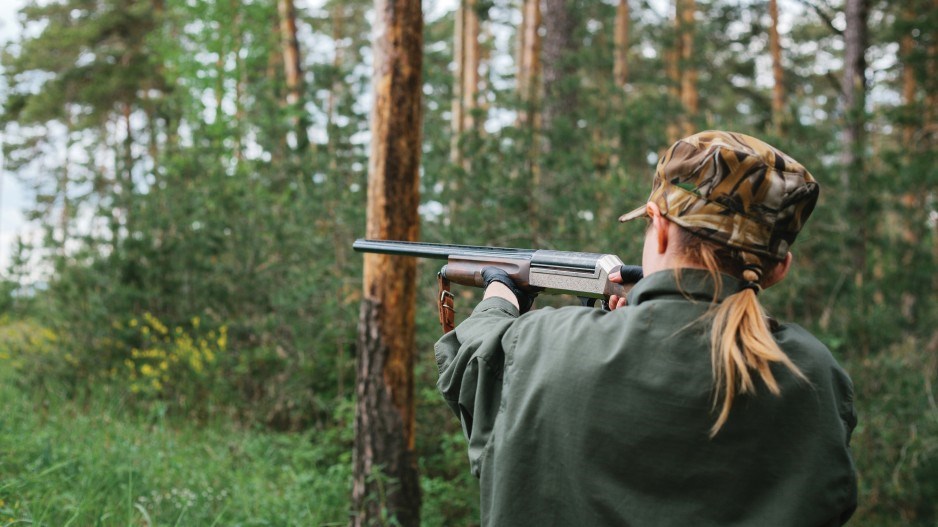Harmony Davison never went hunting with her father because she didn’t want to see the animal die. But last year, she and her husband, Aaron, joined in her father’s moose hunt.
“I grew up on meat and potatoes, but in the last six years I became more conscious of what I’m eating,” said Davison, a massage therapist. After being tested for allergies, she reduced some foods, such as milk and eggs. She moved toward a vegetarian diet, but realized she wasn’t getting enough protein, so she still ate meat a few times per month.
When her father invited Harmony and Aaron to go hunting, she agreed. “It was to be there and see exactly what has to happen in order to make that meat [appear] on my plate,” Davison said.
While watching the moose die was painful for Davison, she participated in the whole experience, including gutting and skinning the carcass. She also learned from local native people how to properly skin the animal and scrape the hide.
Aaron Davis was also not much of a hunter, but became more conscious of his food-buying habits. He wants to know the animal has been free-range and grass-fed and has not been confined or tortured in any way.
With regard to hunting, he said, “Because I’m eating the animal and the animal has had a great life and I’ve ended its life quickly, karmically I feel OK with it.”
Park ranger and hunting instructor Dylan Eyers is not surprised at the Davisons’ interest in hunting as he sees more people showing up in his classes.
He said he greets about two dozen new hunters per month, many from B.C.’s Lower Mainland. About 10 per cent have traditional connections, such as through family, but the rest are those wanting to take more responsibility for where their food is sourced.
“In the last five years, … they have taken action growing their own vegetables, buying organic,” Eyers said. “At some point, they make the connection that they can take responsibility for where their meat comes from.”
Eyers teaches everything from orienteering to butchering, and estimates the average age of his students to be about 30-35. Twenty to 30 per cent are women.
Eyers notes that his hunt training follows the North American Wildlife Management Model, where deer, moose, elk and other big game have a harvestable surplus due to the wildlife population exceeding the carrying capacity of habitat.
Harmony Davison felt the hunt brought her closer to nature and more connected to the indigenous people who taught her how to properly harvest and prepare the carcass.
“Their families have been doing this for thousands of years, if not, they die,” she said. “In the West Coast of B.C., you can’t live as a vegan in the wild. My sustainable movement is more now returning to the wild and I do believe the most sustainable meat is [acquired through] hunting.
“I completely encourage everyone who eats meat to go hunting.”




